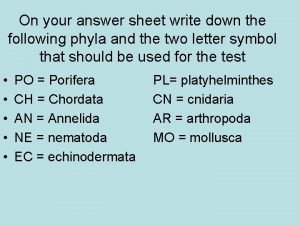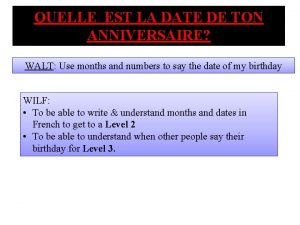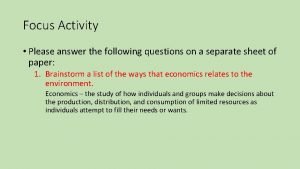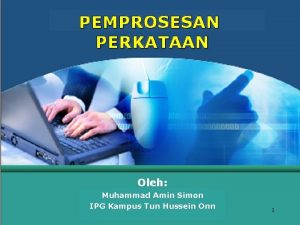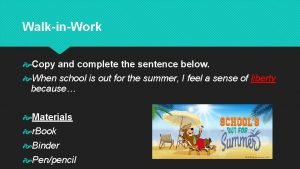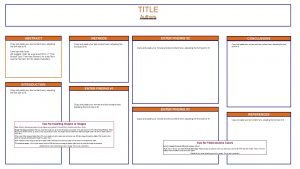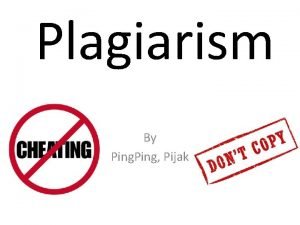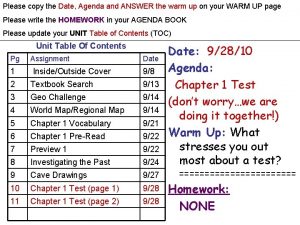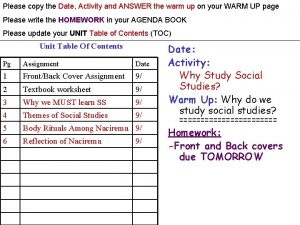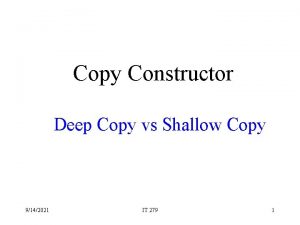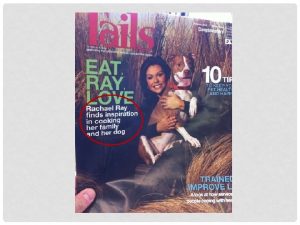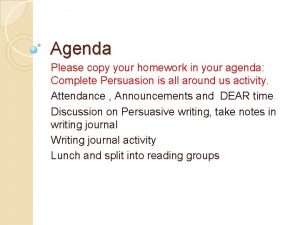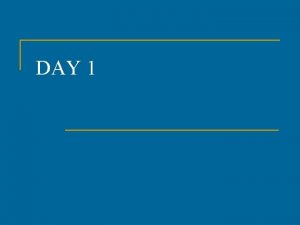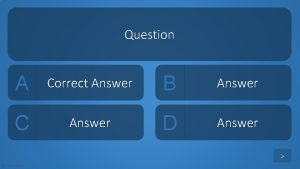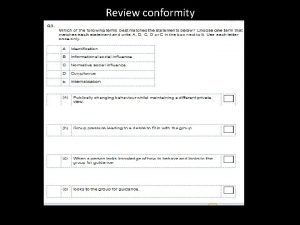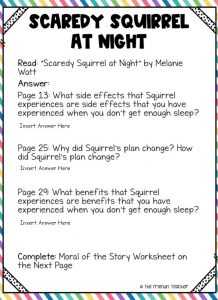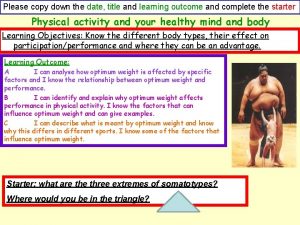Please copy the Date Agenda and ANSWER the















- Slides: 15

Please copy the Date, Agenda and ANSWER the warm up on your WARM UP page Please write the HOMEWORK in your AGENDA BOOK Please update your UNIT Table of Contents (TOC) Unit Table Of Contents Pg Assignment Date 1 Inside/Outside Cover 9/8 2 Textbook Search 9/13 3 Geo Challenge 9/14 4 World Map/Regional Map 9/14 5 Chapter 1 Vocabulary 9/21 6 Chapter 1 Pre-Read 9/22 7 Preview 1 9/22 8 Investigating the Past 9/24 9 Cave Drawings 9/27 10 Chapter 1 Test (page 1) 9/28 11 Chapter 1 Test (page 2) 9/28 Date: 9/28/10 Agenda: Chapter 1 Test (don’t worry…we are doing it together!) Warm Up: What stresses you out most about a test? ============ Homework: NONE

Please copy the Date, Agenda and ANSWER the warm up on your WARM UP page Please write the HOMEWORK in your AGENDA BOOK Please update your UNIT Table of Contents (TOC) Unit Table Of Contents Pg Assignment Date 7 Preview 1 9/22 8 Investigating the Past 9/24 9 Cave Drawings 9/27 10 Chapter 1 Test (page 1) 9/28 11 Chapter 1 Test (page 2) 9/28 12 Chapter 3 Vocabulary 9/29 13 Chapter 3 Pre-read 9/29 Date: 9/29/10 Agenda: Finish Test Chapter 3 Vocab Warm Up: Start filling out “what I think it means” portion of Chapter 3 Vocab ============ Homework: Chapter 3 Pre-read due tomorrow

Chapter 1 Test Multiple Choice: 1. People who study the past are most like A. teachers. B. artists. C. detectives. D. builders.

Chapter 1 Test Multiple Choice: 2. Which of these activities would an archeologist do? A. read documents B. study Earth's features C. examine objects D. make maps

Chapter 1 Test Multiple Choice: 3. What is one example of a humanmade feature that a geographer might study? A. a cave B. a road C. a volcano D. a spear

Chapter 1 Test Multiple Choice: 4. If you found artifacts and paintings in a cave, what question would be the hardest to answer? A. How did people paint on ceilings? B. What did people paint with? C. Why did people paint in caves? D. What did people paint pictures of?

Chapter 1 Test Multiple Choice: 5. If you found footprints of young people near these sculptures, what is the best conclusion you could reach? A. People died at young ages at that time. B. Children were not allowed in the caves. C. People used caves for protection from attack. D. Children took part in ceremonies.

Chapter 1 Test Multiple Choice: 6. You have found this spear thrower with its detailed carving. What does it say about the person who used it? A. Hunting was very important to this person. B. This person was very strong. C. Painting was very important to this person. D. This person prayed to animals.

Chapter 1 Test Multiple Choice: 7. In the area near cave paintings, archeologists have found all but which type of artifact? A. prayer books B. Bits of rope C. Lamps for burning animal fat D. Clay sculptures

Chapter 1 Test Multiple Choice: 8. Many scientists believe that artists signed the cave paintings they created. How was this done? A. Leaving a favorite tool near the painting B. Painting a face next to the picture C. Sign the painting with the artist’s name D. Painting a handprint next to the artwork

Chapter 1 Test Multiple Choice: 9. The earliest fossils were found on which continent? A. South America B. Africa C. Europe D. China

Chapter 1 Test Multiple Choice: 9. The steps social scientists go through to learn about ancient history include all but… A. Finding and studying evidence for clues B. Creating questions based on the evidence found C. Interviewing eye witnesses D. Forming hypotheses

Part II: Use your knowledge of social studies and “The Room” you were given to answer the following questions: Name the Expert Geographer What evidence did they find? The room in the house is in the middle of a wooded area. There is a river flowing 300 feet from the back of the property. Historian Archaeologist Scrapbooks, telephone books, newspaper clippings, books, daily papers Gun, Candle, gas chandelier, lamp, microscope, telephone

PART III - Directions: Use your INBK for this section. Match the picture in your reading notes with the picture below and answer question that follows. (2 points each: Total - 10 Points) 1. Social scientists think this painting was created as part of a hunting ritual. The artist might have been asking for ____________ A good hunt or recording something that actually happened. 2. Social Scientists think the grindstone in this picture was used for grinding minerals/materials to be used as paints. The sharpened stone might have been used for ___________________________. Sculpting and engraving objects and cave walls 3. Social scientists think this tool was created for hunting. Give two reasons why the horse might have been created. It could have been a good luck charm or_______________ it could be related to the hunter’s name. ________________ 4. Social scientists think this painting was created to capture the animals ____________, to honor or please spirits, or used in a Magical Powers religious ritual. 5. Social scientists think these sculptures might have been created to show clan that the cave belonged to a certain _______ or used in a _________________ ceremony (ritual). Coming of age

You are living in 2203 C. E. You have just stumbled onto a schoolroom from the early 21 st century. You walk around the room to identify evidence you can examine to try to understand what went on in this room. – Fill in the chart with five examples of evidence of interest to each type of expert. – Choose three of the examples from your chart. Circle them. – As a 23 rd-century expert, what do these pieces of evidence tell you about 21 st-century schools? Write your ideas in a short paragraph.
 Copy and answer the following on your answer sheet
Copy and answer the following on your answer sheet Record date dividends
Record date dividends What is ex dividend date
What is ex dividend date Raymond carver will you please be quiet please
Raymond carver will you please be quiet please Agenda sistemica y agenda institucional
Agenda sistemica y agenda institucional A smooth texture reflects light evenly
A smooth texture reflects light evenly Quel est mon anniversaire
Quel est mon anniversaire Please answer the following questions
Please answer the following questions Perbezaan copy and paste dan cut and paste
Perbezaan copy and paste dan cut and paste Copy and complete the sentence
Copy and complete the sentence Title copy and paste
Title copy and paste Staples copying centers
Staples copying centers Ghost ping copy and paste
Ghost ping copy and paste Copy in your notebook
Copy in your notebook Copypastefonts
Copypastefonts Copy constructor vs assignment operator
Copy constructor vs assignment operator
